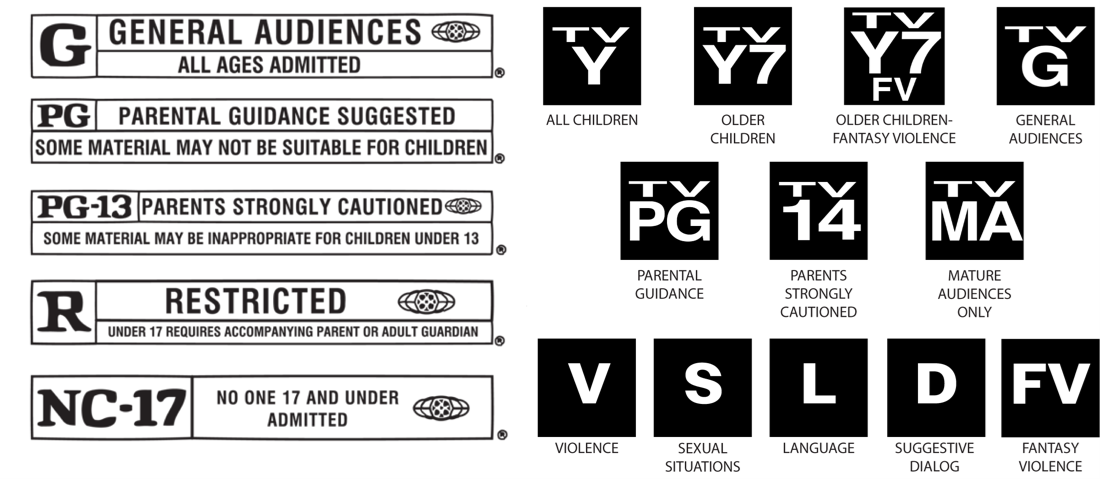Worldwide Content Classification – How Hard Can It Be?
The explosion of direct streaming and OTT services worldwide on a wide range of platforms e.g., online, mobile, and Connected TV (CTV)means content creator’s products have global potential. That means films, TV shows, documentaries, and live events can reach new markets and generate additional revenue for everyone in the production chain. The only challenge is it isn’t a simple process. The good news is Spherex offers a solution to assist creators in reaching those markets quickly, properly, and cost-effectively.
The phrase, “how hard can it be?” is a common first thought, but when considering things like different cultures, languages, religious sensibilities, and intolerance to violence and sexuality, getting content released in a timely manner can get slowed to a crawl or stopped altogether simply due to a lack of cultural awareness and competence.
This begs the question of who in the content creation chain needs age ratings services and when do they need it? Because assigning appropriate age ratings occur post-production, it would be premature to discuss ratings with writers, directors, or producers at the creation phase of content. Their focus is on developing and telling the story. That leaves obtaining age ratings to those whose responsibility is deciding where films will be released, e.g., producers, post-production houses, and distributors.

The map identifies countries where age ratings are required for any content to be exhibited or streamed. Countries shown in dark blue are in the top 20 markets measured by total box office receipts for 2019. Those in light blue simply indicate smaller market countries, but still requiring age ratings. Countries in gray have no formal film maturity rating requirement.
By our count, 56 countries worldwide have some form of maturity ratings requirement. The vast majority of those (45) have a government-managed entity or office (often a sub-agency to a ministry, or separate cultural agency) to oversee their rating system. The rest are operated or managed by the film industry or a private service. In the United States, for example, the Motion Picture Association of America ( MPAA ) established and manages an industry-based rating system that has been used not only in the U.S. but worldwide since 1968. It is administered by the Classification & Ratings Administration (CARA), an independent division of the MPA. Films released in the U.S. must obtain an MPAA rating to be shown in most theaters. Films can be unrated, but that limits exhibition in most of the country’s theaters and greatly reduces box office potential worldwide. However, those same films can be streamed on any OTT platform.
There is no agreed-upon global standard for rating video content. No country, region nor the Media & Entertainment (M&E) industry has called for one to be developed. There are some countries that regulate film, but not television or streaming content. Hence, there are approximately 53 distinctly different sets of rules content creators and distributors must follow to obtain ratings for their work to be shown in other countries. This is in addition to any language, cultural, or religious sensitivities they must also navigate to obtain distribution approval before they can make money. That doesn’t mean countries can’t agree on how to rate content; there are examples of this happening. In Europe, for example, Germany’s independent Freiwillige Selbstkontrolle der Filmwirtschaft (FSK) standard has been adopted by Switzerland , and the Netherland’s “Institute for the Classification of Audiovisual Media” system has been adopted by Belgium and Turkey.
Not everyone gets it right. Mistakes in ratings can lead to public outcry, negative media attention, religious criticism and in some instances, the loss of a job or landing oneself in jail. Major studios have offices located worldwide to deal with ratings and have for decades, so it’s not as challenging for them because their teams live where the content is released and are familiar with any cultural problems that may arise.
It is important to note that some of the world’s largest markets frequently update/change their regulatory requirements. The European Union recently instituted local content requirements. Examples of scenes in a film being approved in one country and not the neighboring country are quite common. What is acceptable in Japan may not be admissible in China. Likewise, some content satisfactory to regulators in one region of India is not allowable in another.
The challenge facing content creators and distributors is their lack of the unique cultural knowledge required to navigate international regulations in their target markets. The sheer volume of catalog and future content (averaging 356,781 new titles each year for the past five years) presents a real dilemma for both regulators and content creators. Creators can’t release the content without a rating, and the regulator can’t assign a rating without a review. It’s the proverbial cat and mouse chase. With over a decade of working directly with the world’s most influential government regulators, Spherex can quickly identify risks and prevent problems from occurring before they happen, thus ensuring your content is released to market without worry or wait.
Related Posts


SILICON VALLEY
2336-H Walsh Ave.
Santa Clara, CA 95051
+1(408) 550-2344
LOS ANGELES
3900 W Alameda Ave.
Burbank, CA 91505
+1(310) 496-7307









